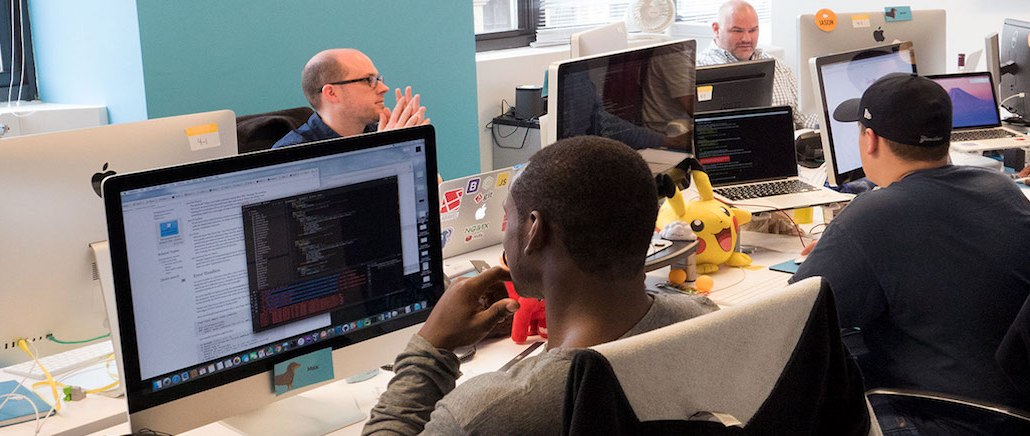
Viral publishers have been inoculated.
Media buyers tell Digiday that interest in viral publishers — such as ViralNova and Distractify, who built large audiences by sharing uplifting content on Facebook — has cooled as reliance upon platforms left the sites exposed to Facebook’s algorithm changes and inconsistent traffic. And several viral publishers have been unable to overcome fraud and viewability issues, sources said. Some have also seen their traffic decline, according to third-party data.
“I think buyers pay less attention and they get less consideration than previously, in part because it was a fad that had its bubble burst,” said Rob Griffin, chief innovation officer at Almighty.
By relying on clickbait headlines and emotional content, Upworthy, the granddaddy of viral publishers grew quickly: By the end of 2013, it drew in 45 million to 85 million unique visitors per month, according to Quantcast. Spotting that growth, several viral publishers popped up with the intent of copying Upworthy’s success. But some of these publishers – such as ViralNovelty, Funtista and The Washington Post’s KnowMore – haven’t published anything within the last year. And others have seen their traffic decline as seen in the interactive chart below.
Some of the publishers with traffic declines have still been able to increase their reach through social media. In October, Upworthy increased the number of people it reached through social media to 10.1 million people, up from 7.9 million people in October 2015.
“We are content to reach a massive number of people wherever they are,” said Amy O’Leary, Upworthy editorial director. Because Upworthy relies more on branded content more than on display and banner ads (which require on-site traffic to monetize), it can still drive revenue through its social media content, a company spokesperson said.
But not all viral publishers have the brand partnerships that Upworthy has. And in general, publishers’ ability to monetize content is much more limited on social platforms than it is on their own sites.
Newswhip data show that most feel-good publishers saw a year-over-year increase in how many times people interacted with their articles on Facebook. However, Newswhip data does not separate Instant Articles from articles that appear on publishers’ own webpages. Even if Facebook interactions are up, that doesn’t negate comScore and SimilarWeb data showing fewer people visiting the publishers’ websites.
One likely reason some of these sites have seen their traffic sputter is because they rely heavily on platforms, and Facebook made it harder for publishers to increase their organic reach when they changed their algorithm to emphasize friends’ posts over publishers’ posts, said Deep Focus CEO Ian Schafer. Jill Isherwood, associate director of broadcast research at GSD&M, added that the viral-content space also became overcrowded because viral sites popped up at a faster rate than the platforms could add users.
“I’d guess there is some clickbait fatigue happening as well,” Isherwood said.
Unlike in years past, Schafer said he no longer hears of large advertisers regularly making new commitments to viral sites. One possible reason is because since the algorithm change “advertisers are starting to question how much of our media dollars [on platform-reliant publishers] are going to distribution as opposed to content creation,” Schafer said.
Griffin said that another reason buyers have shifted dollars away from viral websites and toward premium publishers is because “viewability and fraud are serious problems” on viral websites.
Since depending on social platforms can lead to volatile swings in traffic, reaching scale consistently can be a problem for feel-good publishers. Stephanie Estes, Cramer-Krasselt director of digital strategy, said that when her agency wants native ads to go viral they only rely on feel-good viral publishers if the campaign is themed around inspiration. Otherwise, Cramer-Krasselt uses services like Sharethrough or TripleLift, which are better for reaching scale and bringing users back to clients’ websites where they are more monetizable, she said.
Although most viral publishers have had rocky traffic in the past year, there is one glaring exception. LittleThings had its highest traffic to date in September and October, and a company spokesperson estimates it will have a 10 percent month-over-month increase in traffic in November. LittleThings is also projecting a near doubling of its revenue from $25 million in 2015 to about $50 million in 2016.
Unlike smaller feel-good sites, the company has focused on content creation over curation. It also uses a proprietary algorithm to test its content’s virality before publishing, said Gretchen Tibbits, LittleThings president and chief operating officer.
Tibbits was hesitant to attribute recent traffic increases to people coming to LittleThings for an escape from the contentious presidential election. But she did note, “We’ve actually had some advertisers come to us looking for that non-political brand-safe environment.”
Photo courtesy of LittleThings
More in Media

AI Briefing: How political startups are helping small political campaigns scale content and ads with AI
With about 100 days until Election Day, politically focused startups see AI as a way to help national and local candidates quickly react to unexpected change.

Media Briefing: Publishers reassess Privacy Sandbox plans following Google’s cookie deprecation reversal
Google’s announcement on Monday to reverse its plans to fully deprecate third-party cookies from its Chrome browser seems to have, in turn, reversed some publishers’ stances on the Privacy Sandbox.

Why Google’s cookie deprecation reversal isn’t actually a reprieve for publishers
Publishers are keeping a “business as usual” approach to testing cookieless alternatives despite Google’s announcement that it won’t be fully deprecating third-party cookies after all.





